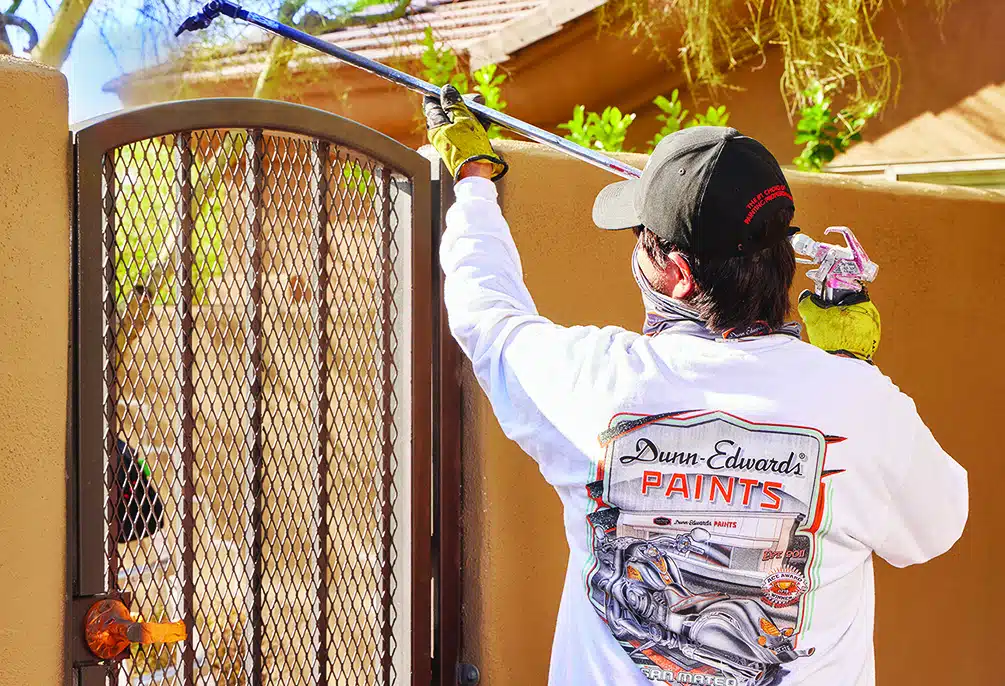Ladder Safety Tips
11/23/2016 | Dunn Edwards |
When it comes to on-the-job injuries, the improper use of ladders is at the top of the list. A Consumer Product Safety Commission (CPSC) report on ladder safety reveals some startling facts. In the United States, more than 150,000 people every year are involved in a ladder-related accident, while elevated falls account for almost 700 occupational deaths (15 percent of all occupational deaths) annually.
During the last 10 years, the number of ladder-related injuries has increased 50 percent — with the most prominent causes involving the selection of the wrong type of ladder for the job, worn/damaged ladders, improper ladder use and incorrect placement. Despite these numbers, the Occupational Safety and Health Administration (OSHA) believes 100 percent of all ladder accidents could be prevented if proper attention to equipment and climber training were provided.
To help contractors and companies prevent these type of jobsite injuries, Louisville Ladder — an innovative product design and manufacturing company — offers a valuable safety training program, called C.L.I.M.B. Academy, available on DVD free of charge.
C.L.I.M.B. stands for:
C. — Choose the right equipment
Ladders are designed for specific uses. This means that a ladder that might be fine for one type of job, could be dangerous if used for a different type of project. Be sure to evaluate the work environment and note any possible hazards, while keeping the physical requirement of the job in mind.
L. — Look for damaged or missing parts
Before you leave for a jobsite, it’s vital to inspect all ladders to check for any damage. This includes feet, rungs, connections, ropes, bolts and braces. Be sure to mark any unfit ladders as damaged and store them separately, away from usable ladders.
I. — Insure a safe set-up
One of the major causes of ladder accidents is an incorrect set-up. Taking the proper steps — such as being aware of overhead wires or obstructions, clearing away clutter around the ladder, blocking off the area around you and making your presence known — will help ensure a safe job.
M. — Move safely using three points of contact
Unsafe maneuvering on a ladder can spell disaster. Moving too quickly, lack of attention and improper footwear can all contribute to workplace accidents. Tips for safe movement include slip-resistant shoes, keeping hands free when climbing, watching your step and always keeping three parts of your body in contact with the ladder while climbing.
B. — Be a ladder safety expert — NOT a statistic!
By following the best practices outlined in Louisville Ladders’ C.L.I.M.B. Academy training, you will have the knowledge and understanding of how to provide the securest possible workplace for you and your employees. Safe painting!














